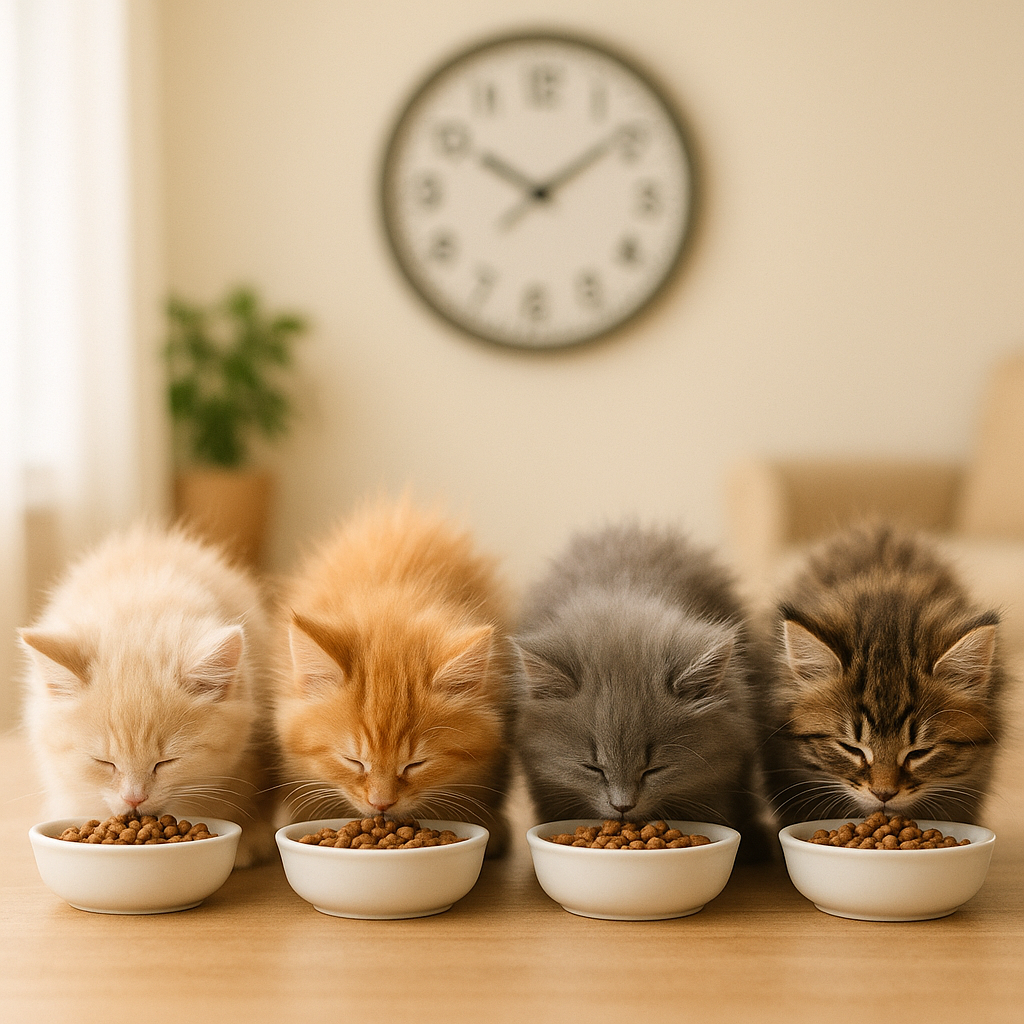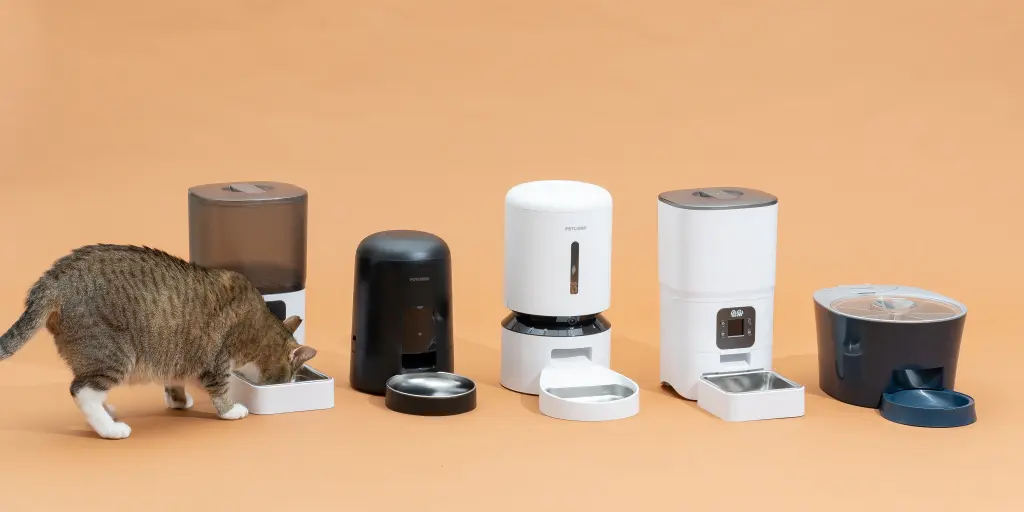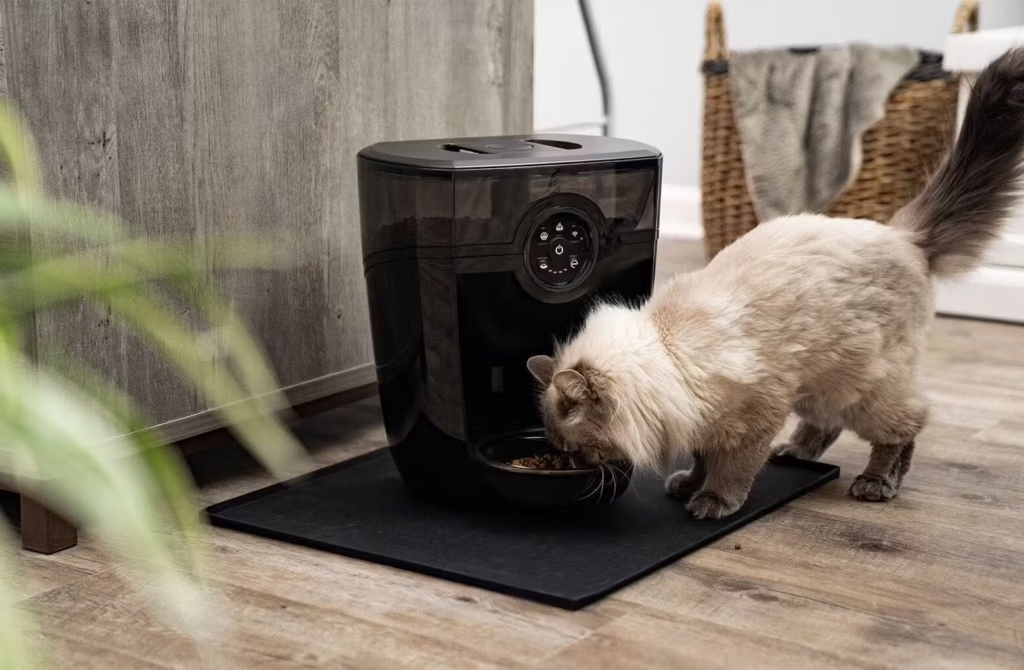Kitten Feeding Schedule: The Complete Guide for Healthy Growth
Bringing a kitten home is an exciting moment for every pet parent. These tiny furballs are playful, curious, and full of life, but they also need special care—especially when it comes to nutrition. One of the most common concerns new cat owners have is: "What's the right kitten feeding schedule?" A well-structured kitten food schedule ensures healthy growth, immunity, and the foundation for a long, happy life.

Understanding a Kitten's Nutritional Needs
Kittens may look small, but their bodies are developing rapidly. Proper nutrition helps them build strong muscles, healthy bones, and a resilient immune system. Unlike adult cats, kittens burn calories much faster because they are constantly exploring and playing.
Why Kittens Need a Special Diet
Adult cat food does not provide the right balance of nutrients for kittens under one year old. They require specially formulated kitten food that's rich in protein, fats, taurine, and essential minerals. Think of it as the difference between fueling a marathon runner and a growing child—kittens need more energy-dense meals to thrive.
Key Nutrients Essential for Kittens
Builds muscles and supports organ development.
Provide concentrated energy and support brain development.
Essential for vision and heart health.
Strengthen bones and teeth.
Boost immunity and overall growth.
Crucial for brain and vision development.
Kitten Feeding Schedule by Age
Every kitten develops differently, but their kitten feeding schedule by age generally follows a predictable timeline. Below is a complete breakdown.
| Age | Feeding Schedule for a Kitten |
|---|---|
| 0–4 Weeks Old | Mother's milk or formula every 2–3 hours (8–12 feedings per day) |
| 4–8 Weeks Old | Wet food mixed with formula, 4–6 meals per day |
| 8–12 Weeks Old | High-quality wet food, 4 meals per day |
| 3–6 Months Old | Wet and dry kitten food, 3 meals per day |
| 6 Months–1 Year Old | Mostly dry food, 2–3 meals per day |
Kitten Food Schedule: Wet vs. Dry Food
One of the biggest debates among cat owners is whether kittens should eat wet food, dry food, or both. Here's a breakdown:
- Easier to chew
- Hydrating
- Often tastier for kittens
- Spoils quickly
- Can stick to teeth
- Convenient
- Promotes dental health
- Lasts longer
- Low moisture
- Harder for young kittens to chew
The best option is usually a kitten feeding schedule wet and dry combination. For example:
- Morning: Wet food
- Afternoon: Small portion of dry food
- Evening: Wet food
For busy owners, an automatic cat feeder can make balancing wet and dry food much easier.
4 Week Old Kitten Feeding Schedule
A 4-week-old kitten feeding schedule should focus on transitioning from milk to soft wet food.
- Feedings every 4–5 hours
- Mix kitten milk formula with wet food into a porridge-like consistency
- Offer 1–2 tablespoons per meal
8 Week Kitten Feeding Schedule
At 8 weeks, kittens are fully weaned. A structured 8-week kitten feeding schedule looks like this:
Feeding Schedule for a Kitten: Portion Sizes & Frequency
Kittens have small stomachs but high energy needs. Feed small, frequent meals instead of large portions. A general guideline: 1 tablespoon of food per 4 ounces of body weight daily.
Daily Kitten Eating Schedule and Routine
Consistency is key. Feeding your kitten at the same times daily regulates digestion, reduces begging, and creates bonding moments.
If you work long hours, consider an automatic feeder with camera to maintain mealtime structure even when you're away.
Common Feeding Mistakes to Avoid
Can lead to dehydration and nutritional imbalances.
Many human foods are toxic to cats and can cause serious health issues.
Can cause hypoglycemia, especially in young kittens.
Can lead to obesity and related health problems.
Hydration and Water Needs
Water is just as important as food. On average, kittens need 60–80 ml of water per kilogram of body weight per day. Encourage hydration with cat fountains, shallow bowls, and by mixing water into wet food.
Transitioning Kittens to Adult Cat Food
Kittens should stay on kitten food until 12 months (large breeds up to 18 months). Transition gradually over 7–10 days by mixing adult food into kitten food.
Special Feeding Considerations
Require kitten milk replacement formula and careful bottle feeding.
May need calorie-dense meals with vet guidance.
Ensure equal portions and prevent food bullying.
Kitten Feeding Myths and Facts
Fact: Most cats are lactose intolerant and cow's milk can cause digestive issues.
Fact: Free-feeding often leads to overeating and obesity.
Fact: Wet food provides essential hydration and is easier to digest.
Conclusion
A proper kitten feeding schedule isn't just about filling a bowl—it's about timing, nutrition, and consistency. From bottle feeding to balancing wet and dry meals, every stage matters. Stick to age-based guidelines, monitor portion sizes, and encourage hydration to ensure your kitten grows into a healthy, happy adult cat.




